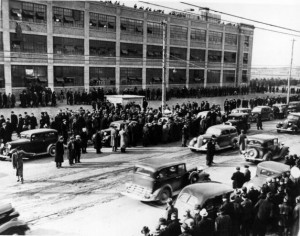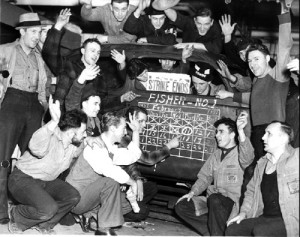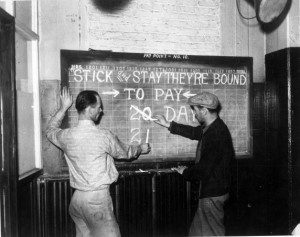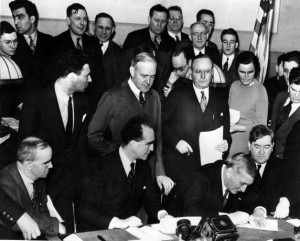Flint Sit-Down “Motto”:
It is crucial to our goals to have GM worker support. With GM worker support we can move forward in our fight to gain human recognition. We must band together to protect all auto workers against GM’s industrial empire. Auto workers need to band together to empower the work place, and protect ourselves against the arbitrary power by supervisors and the security provided by a seniority system that controls layoffs, rehires, and job assignments! [1]
On December 30, 1936
Fisher Body No. 2 in Flint, Michigan workers sat down in protest.This plant employed 1,000 or our workers.That same evening, workers at Fisher Body No. 1, which employed 7,300, sat down to prevent the shipment of body dies outside of Flint. Although the corporation maintained that it would not discuss grievances so long as the plants were occupied, their courageous efforts and solidarity managed to create an upsurge of strikes across GM plants in Detroit, Ohio, Indiana, Wisconsin, Missouri, and Canada.
January 8, 1937
50 GM plants with more than 125,000 employees have now been closed as a result of the AUW sit-downs and others by parts shortages, as the strikes’ effects have taken their toll.
February 1, 1937
The UAW extended the sit-down strike to Chevrolet No. 4. This plant manufactures the engines for GM’s largest division.To avoid the presences of company spies, the UAW devised a clever ruse to thwart GM’s countermeasures by warning of an imminent union assault on Plant No. 9 as opposed to Plant No. 4.
Strikers at Plant No. 4 halted Chevrolet production and exerted an irresistible pressure on the corporation to negotiate.
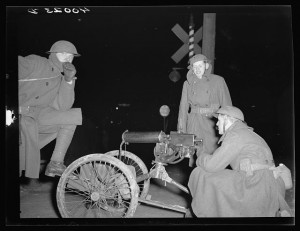
The image above illustrates the National Guard called in by Governor Frank Murphey to prevent loss of life during sit-down strikes.
CIO chief John L. Lewis, Governor Frank Murphey and a supporting cast of GM and UAW representatives gathered in Detroit, MI two days later to begin negotiation. On February 11, 1937 they announced an agreement.
[1]

